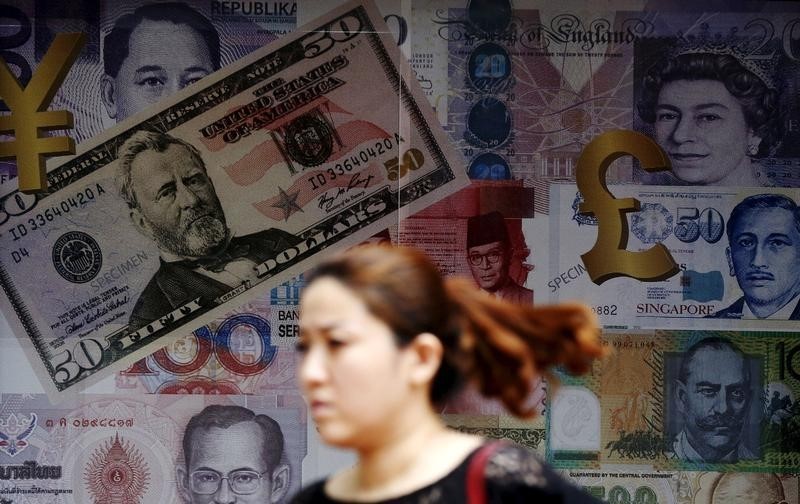Investing.com’s stocks of the week
Investing.com - The dollar edged lower against its major rivals on Thursday, hovering around its lowest level in eight weeks as investors set aside trade concerns for now.
The U.S. dollar index, which measures the greenback’s strength against a basket of six major currencies, was down 0.15% at 93.97 by 3:45AM ET (0845GMT), not far from Tuesday's low of 93.88, which was the weakest since July 26.
Global markets appear to be shrugging off concerns over and escalating trade war between the U.S. and China.
On Monday, the U.S. slapped tariffs of 10% on $200 billion in Chinese goods, before they rise to 25% by the end of 2018, rather than an outright 25%.
China retaliated by putting tariffs on $60 billion in U.S. goods. However, China will put a 10% tariff on some goods it had previously earmarked for a 20% levy.
The Australian dollar, seen as a proxy for China-related trades as well as a barometer of broader risk sentiment, held near three-week highs of 0.7265.
Meanwhile, in Europe, attention will be focused on an informal summit of European Union leaders in Austria on Thursday.
Brexit and immigration are set to be the main points of discussion. U.K. Prime Minister Theresa May, under pressure at home and abroad to achieve a workable Brexit deal, has called for "goodwill" and flexibility from her EU counterparts. The future of the Irish/Northern Irish border remains a stumbling block in talks.
The British pound was up 0.25% at 1.3175, within sight of a two-month high of 1.3215 reached in the previous session.
The euro traded at 1.1700, up 0.2% and not far from peaks in August and September around 1.1730.
Elsewhere, the New Zealand dollar jumped to three-week highs after strong domestic GDP data showed the country's economy grew at the fastest pace in two years in the second quarter.
The kiwi rose as much as 0.6% to a three-week high of 0.6654 and last stood at 0.6650.
